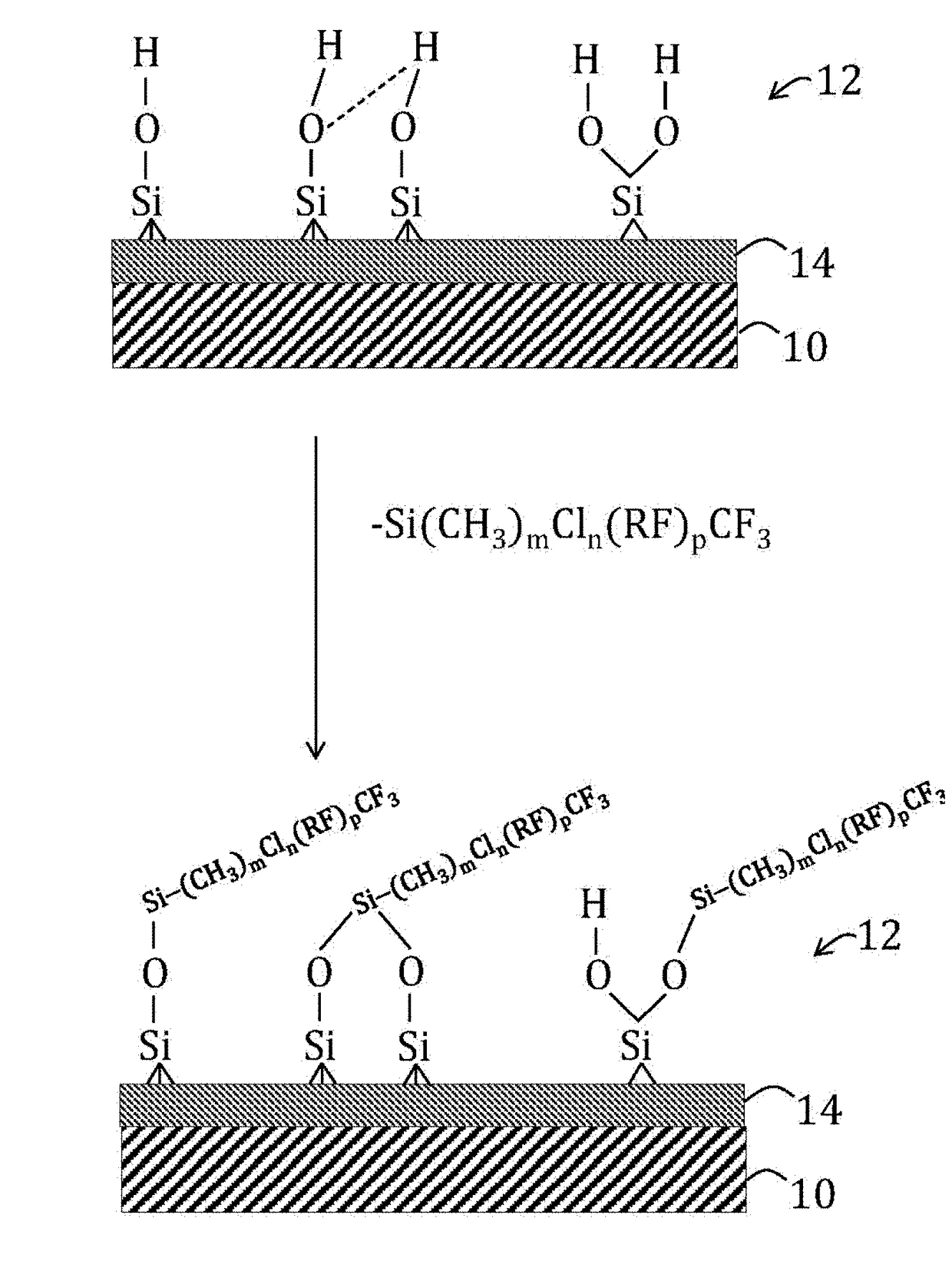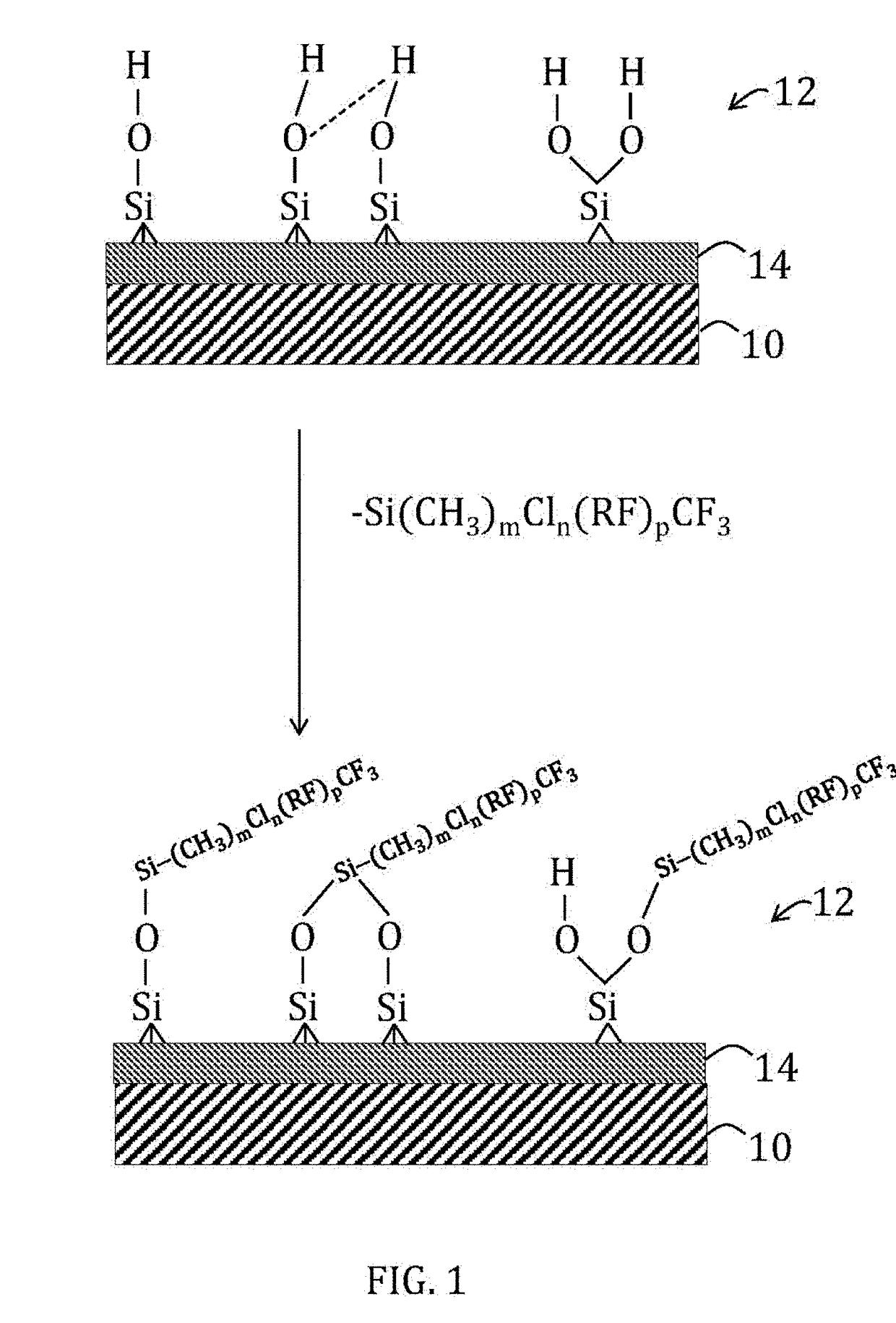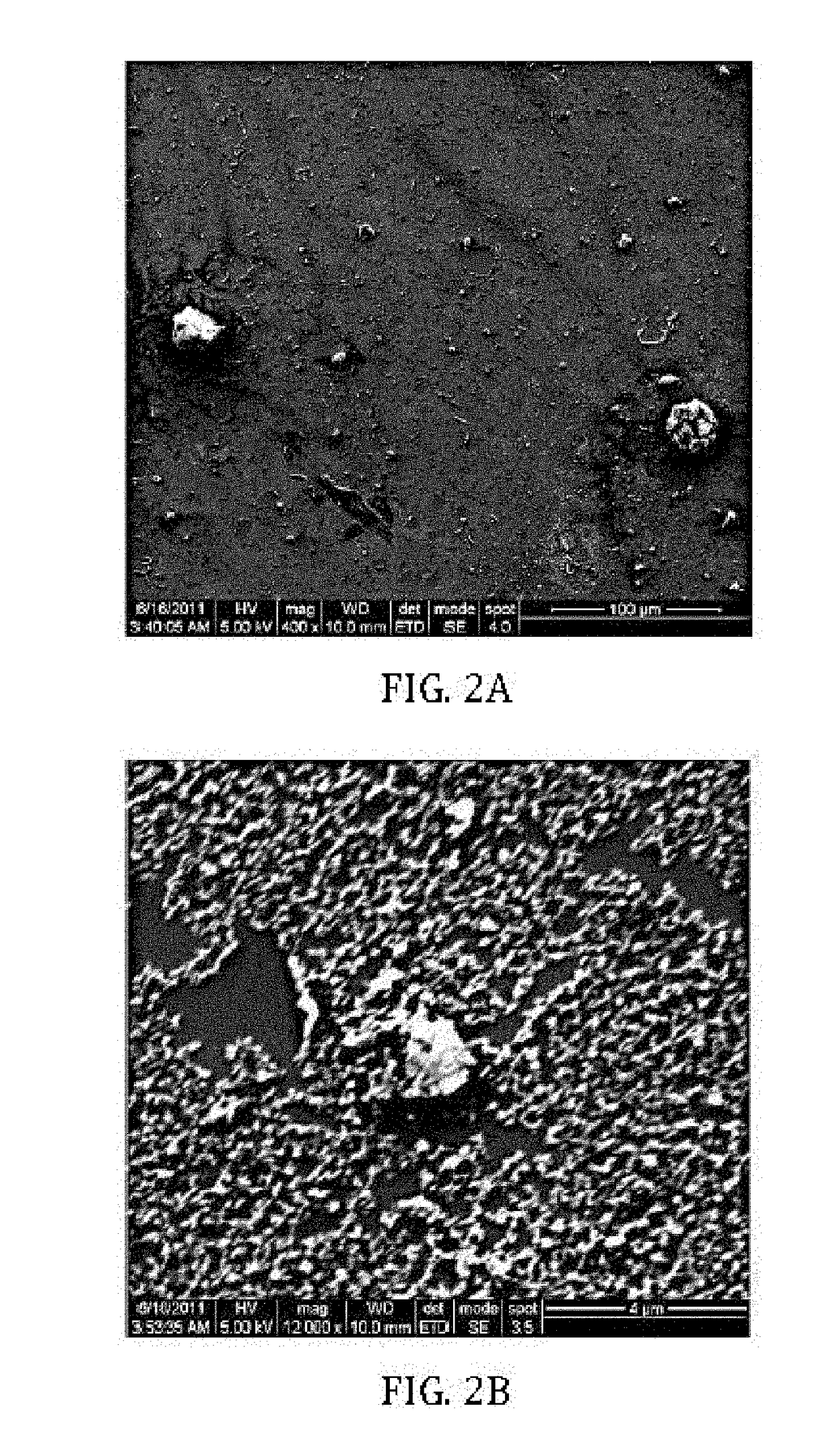Fluoroalkylsilanated mesoporous metal oxide particles and methods of preparation thereof
a technology of mesoporous metal oxide and fluoroalkylsilanated sulfur, which is applied in the field of coating filler particles, can solve the problems of poor flow properties, large specific surface area, mechanical weakness, etc., and achieve the effect of low surface energy
- Summary
- Abstract
- Description
- Claims
- Application Information
AI Technical Summary
Benefits of technology
Problems solved by technology
Method used
Image
Examples
example 1
ane Selection
[0029]Among silane coupling agents, multiple chemical forms are known, including mono-, di-, and tri-chlorosilanes as well as mono-, di-, and tri-alkoxysilanes. It is widely understood that alkoxysilanes should be hydrolyzed (often in-situ) in order to become properly activated for attachment to silica surfaces. It is also understood that the attachment reaction generates water as a byproduct. Because the presently disclosed invention involves methods that are effective only when the concentration of water is minimized (as apparent to one skilled in the art), the surface treatment agent was selected only from among the chlorosilanes. Others have shown that the choice of chlorosilane will impact the final properties of the treated surface; however, based only on these previous findings, the impact of the choice of chlorosilane, particularly as it relates to the need for minimal surface energy, is not obvious. In particular, whereas silanes of higher functionality may att...
example 2
[0036]In addition to silane head-group functionality, another choice in selecting the appropriate surface treatment was the length of the silane tail group. As mentioned previously, the treated aggregates must possess enough —CF2— and —CF3 molecular fragments to provide good compatibility with fluoropolymers or fluoroelastomers. However, if the size of the silane molecule used in the surface treatment was too large, the geometrical constraints inherent in mesoporous silica may have prevented a high density of grafting, making the choice not obvious based on the prior art. To determine the proper tail length, the same techniques for analysis described in Example 1 were utilized for precipitated silica. In addition, fumed silica (7 nm diameter, 390±40 m2 / g specific surface area), as purchased from Sigma-Aldrich®, was treated in separate batches along with the precipitated silica described in Example 1. The silanes used were FDec-MCS, FOct-MCS, and (3,3,3-t...
example 3
on of Fluoroelastomer-Coated Particles
[0039]In order to demonstrate that the presently disclosed invention allowed for the creation of coating formulations with a fluoroelastomer that subsequently imparted a complex surface texture and outstanding liquid repellence characteristics to a substrate via a simple coating process, elastomeric composites were produced by dispersing 5 mg / mL of a blend consisting of 50 wt % functionalized fumed silica particles (treated with FDec-MCS as described in Examples 1 and 2) and 50 wt % Viton® Extreme™ ETP-600S fluoroelastomer (a copolymer of ethylene, tetrafluoroethylene, perfluoro(methylvinyl) ether, and bromotetrafluorobutene obtained from DuPont™) into a 5 mg / mL solution of 1,3-dichloro-1,2,2,3,3-pentafluoropropane (AK-225G) solvent. This mixture was then spin-coated onto silicon wafers at 900 rpm for 30 seconds.
[0040]Dynamic contact angles for the coatings were measured using a DataPhysics Instruments OCA20 goniometer equipped with a TBU90 tilt...
PUM
| Property | Measurement | Unit |
|---|---|---|
| diameter | aaaaa | aaaaa |
| surface energy | aaaaa | aaaaa |
| time | aaaaa | aaaaa |
Abstract
Description
Claims
Application Information
 Login to View More
Login to View More - R&D
- Intellectual Property
- Life Sciences
- Materials
- Tech Scout
- Unparalleled Data Quality
- Higher Quality Content
- 60% Fewer Hallucinations
Browse by: Latest US Patents, China's latest patents, Technical Efficacy Thesaurus, Application Domain, Technology Topic, Popular Technical Reports.
© 2025 PatSnap. All rights reserved.Legal|Privacy policy|Modern Slavery Act Transparency Statement|Sitemap|About US| Contact US: help@patsnap.com



